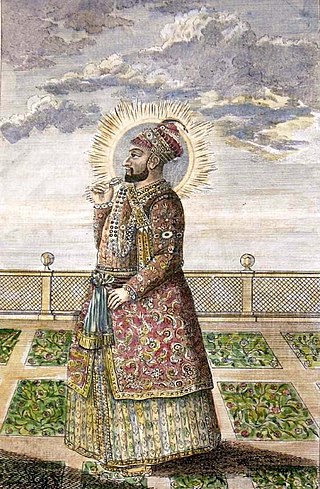
Hyder Ali was the Sultan and de facto ruler of the Kingdom of Mysore in southern India. Born as Hyder Ali, he distinguished himself as a soldier, eventually drawing the attention of Mysore's rulers. Rising to the post of Dalavayi (commander-in-chief) to Krishnaraja Wodeyar II, he came to dominate the titular monarch and the Mysore government. He became the de facto ruler of Mysore as Sarvadhikari by 1761. During intermittent conflicts against the East India Company during the First and Second Anglo–Mysore Wars, Hyder Ali was the military leader.
Urdu literature refers to the literature in the Urdu standard of the Hindostani language. While it tends to be dominated by poetry, especially the verse forms of the ghazal غزل and nazm نظم, it has expanded into other styles of writing, including that of the short story, or afsana افسانہ. Urdu literature is mostly popular in Pakistan, where Urdu is the national language and India, where it is a recognized language.
Anita Desai, born Anita Mazumdar, is an Indian novelist and the Emerita John E. Burchard Professor of Humanities at the Massachusetts Institute of Technology. As a writer she has been shortlisted for the Booker Prize three times. She received a Sahitya Akademi Award in 1978 for her novel Fire on the Mountain, from the Sahitya Akademi, India's National Academy of Letters. She won the British Guardian Prize for The Village by the Sea (1983). Her other works include The Peacock, Voices in the City, Fire on the Mountain and an anthology of short stories, Games at Twilight. She is on the advisory board of the Lalit Kala Akademi and a Fellow of the Royal Society of Literature, London.
Ahmed Ali was a Pakistani novelist, poet, critic, translator, diplomat and scholar. A pioneer of the modern Urdu short story, his works include the short story collections: Angarey (Embers), 1932; Hamari Gali, 1940; Qaid Khana, 1942; and Maut Se Pehle, 1945. His other writings include Twilight in Delhi (1940), his first novel in the English language.

Qurratulain Hyder was an Indian Urdu novelist and short story writer, an academic, and a journalist. One of the most outstanding and influential literary names in Urdu literature, she is best known for her magnum opus, Aag Ka Darya, a novel first published in Urdu in 1959, from Lahore, Pakistan, that stretches from the fourth century BC to post partition of India.

Hyderabadi Muslims, also referred to as Hyderabadis, are a community of Deccani people, from the area that used to be the princely state of Hyderabad in the regions of Marathwada, Telangana, and Kalyana-Karnataka.
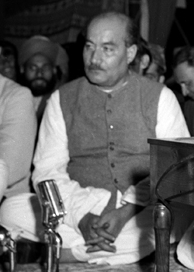
Josh Malihabadi popularly known as Shayar-e-Inqalab was a one of the finest Urdu poets of the era of British India. Known for his liberal values and challenging the established order, he wrote over 100,000 couplets and more than 1,000 rubaiyat in his lifetime. His wrote Yaadon ki Barat, his autobiography which is noted for its frank and candid style. The first Prime Minister of India, Jawaharlal Nehru held him in high esteem and frequently attended the mushaira at Lala Kishan Lal Kalra's United Coffee House where Josh performed.
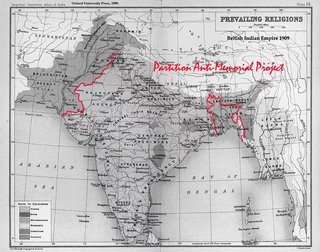
The Partition of India and the associated bloody riots inspired many creative minds in the republics of India, Pakistan, and Bangladesh to create literary/cinematic depictions of this event. While some creations depicted the massacres during the refugee migration, others concentrated on the aftermath of the partition in terms of difficulties faced by the refugees in both side of the border. Even now, more than 60 years after the partition, works of fiction and films are made that relate to the events of partition. W.H. Auden in his poem "Partition" showed the dilemmas of Cyril John Radcliffe, 1st Viscount Radcliffe, responsible for deciding which parts of India went where.

Cracking India is a novel by author Bapsi Sidhwa.

Gadar: Ek Prem Katha is a 2001 Indian Hindi-language romantic period action drama film directed by Anil Sharma from a story written by Shaktimaan Talwar and was set during the Partition of India in 1947. Loosely based on the life of Boota Singh, the film stars Sunny Deol, Ameesha Patel and Utkarsh Sharma in lead roles, alongside Amrish Puri, Lillete Dubey and Vivek Shauq in supporting roles.
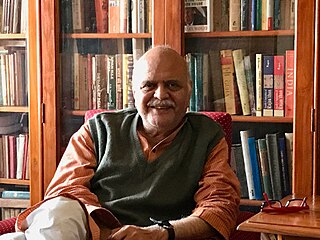
Saleem Kidwai was a medieval historian, gay rights activist, and translator. Kidwai was a professor of history at Ramjas College, University of Delhi until 1993 and thereafter an independent scholar.

Chhalia is a 1960 Indian Hindi-language drama film directed by Manmohan Desai. It stars Raj Kapoor, Nutan, Pran, Rehman and Shobhna Samarth. The story is loosely based on the 1848 short story "White Nights" by Fyodor Dostoyevsky, but is focused on the issue of estranged wives and children in the aftermath of Partition. Chhalia was shot in black-and-white. Music by Kalyanji-Anandji, played a part in the film's box office success.

Attia Hosain was a British-Indian novelist, author, writer, broadcaster, journalist and actor. She was a woman of letters and a diasporic writer. She wrote in English although her mother tongue was Urdu. She wrote the semi-autobiographical Sunlight on a Broken Column and a collection of short stories named Phoenix Fled. Her career began in England in semi-exile making a contribution to post-colonial literature. Anita Desai, Vikram Seth, Aamer Hussein and Kamila Shamsie have acknowledged her influence.

Maharaja Sir Kishen Pershad Bahadur Yamin us-Sultanat was an Indian noble who served as Prime Minister of Hyderabad twice.
Umrao Jaan Ada is an Urdu novel by Mirza Hadi Ruswa (1857–1931), first published in 1899. It is considered the first Urdu novel by many and tells the story of a tawaif and poet by the same name from 19th century Lucknow, as recounted by her to the author.

Mah Laqa Bai, born Chanda Bai, and sometimes referred to as Mah Laqa Chanda, was an Indian 18th century Urdu poet, tawaif and philanthropist based in Hyderabad. In 1824, she became the first female poet to have a diwan of her work, a compilation of Urdu Ghazals named Gulzar-e-Mahlaqa, published posthumously. She lived in a period when Dakhini was making its transition into the highly Persianized Urdu. Her literary contributions provide insight into such linguistic transformations in southern India.

Kishwar Desai is an Indian author and columnist. Her first novel, Witness the Night, won the Costa Book Award in 2010 for Best First Novel and has been translated into over 25 languages. It was also shortlisted for the Author's Club First Novel Award and longlisted for the Man Asian Literary Prize. Her novel Origins of Love, published in June 2012, was critically acclaimed. The Sea of Innocence, published in 2014 in India as well as in the UK and Australia, was widely discussed as it dealt with the issue of gang rape. Desai also has a biography, Darlingji: The True Love Story of Nargis and Sunil Dutt, to her credit. She wrote her latest book in 2020, released on 28 December, titled, The Longest Kiss.
Aag Ka Darya is a landmark historical novel written by Qurratulain Hyder providing context to the traumatic partition of the Indian subcontinent into two nation-states. It has been described as "one of the Indian Subcontinent's best known novels". The novel timelines spanned more than two thousand years, starting from the time of Chandargupta Maurya in the fourth century BC to the post-Independence period in India and Pakistan. It was published in Urdu in 1959 and translated by the author into English in 1998 as River of Fire. In 2019, it was reprinted by New Directions Publishing.
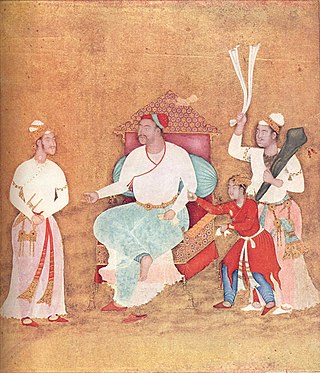
The Deccanis or Deccani People are an ethnoreligious community of Deccani-speaking Muslims who inhabit or are from the Deccan region of Central and Southern India, and speak the Deccani dialect. The community traces its origins to the shifting of the Delhi Sultanate's capital from Delhi to Daulatabad in 1327 during the reign of Muhammad bin Tughluq. Further ancestry can also be traced from immigrant Muslims referred to as Afaqis, also known as Pardesis who came from Central Asia, Iraq and Iran and had settled in the Deccan region during the Bahmani Sultanate (1347). The migration of Muslim Hindavi-speaking people to the Deccan and intermarriage with the local Hindus whom converted to Islam, led to the creation of a new community of Urdu-speaking Muslims, known as the Deccani, who would come to play an important role in the politics of the Deccan. Their language, Deccani Urdu, emerged as a language of linguistic prestige and culture during the Bahmani Sultanate, further evolving in the Deccan Sultanates.

Hijab Imtiaz Ali (1908–1999) was a writer, editor and diarist. She is a well known name in Urdu literature and a pioneer of romanticism in Urdu. She is also considered as the first female Muslim pilot after she obtained her official pilot license in 1936, although Zuleykha Seyidmammadova from Soviet Azerbaijan had qualified as a pilot two years earlier, in 1934.















